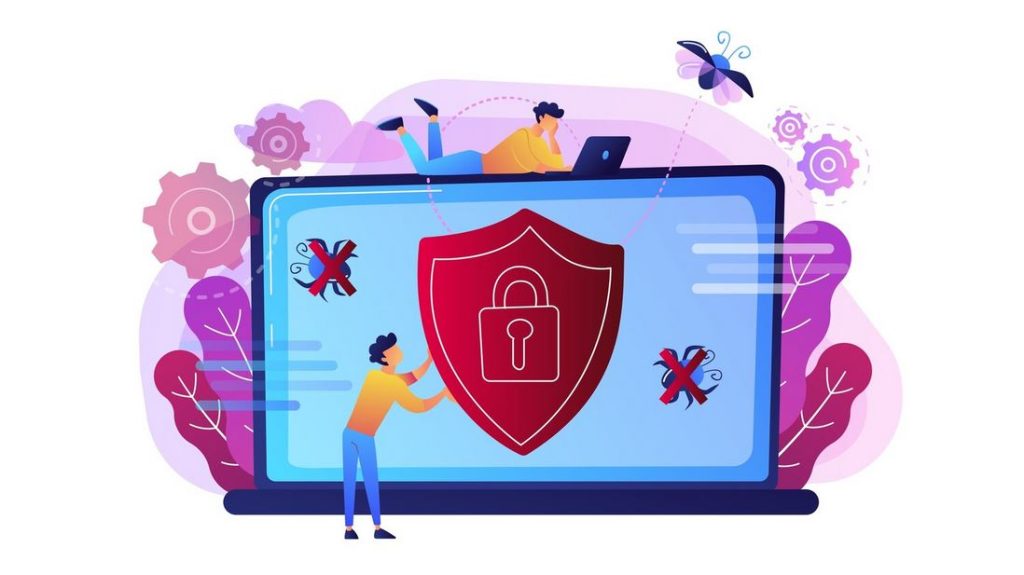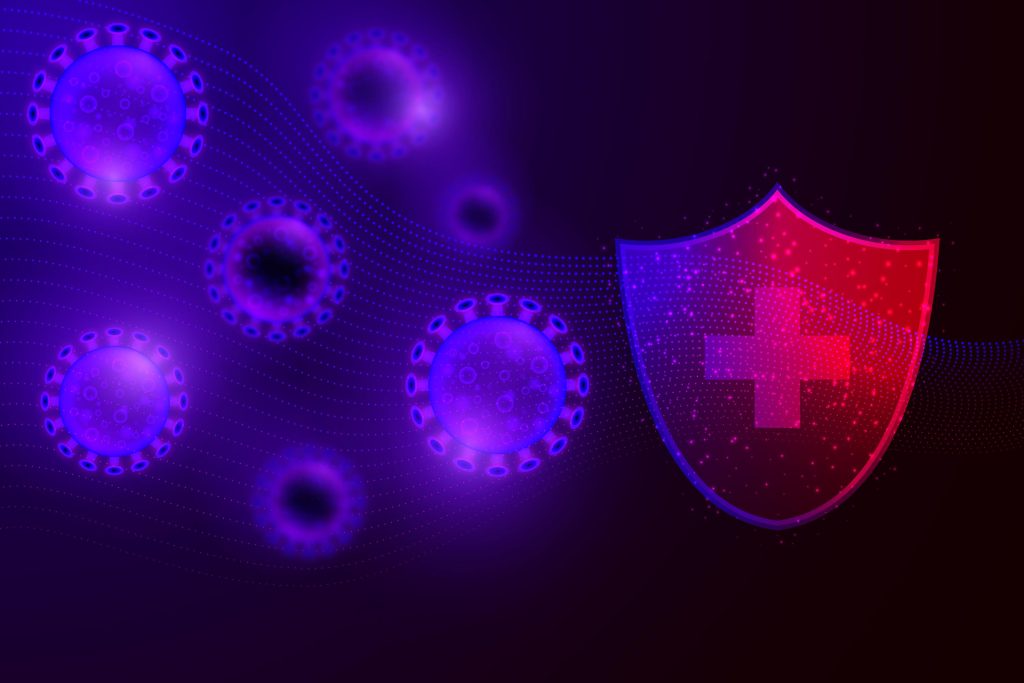Antivirus Software for Windows 7

In an era where cybersecurity threats evolve daily, ensuring robust protection for your computer remains paramount. For users still operating on Windows 7, this task is particularly challenging due to Microsoft’s discontinuation of security updates for the operating system in January 2020. Consequently, antivirus software becomes an essential line of defense against malware, ransomware, and other cyber threats. This article explores the necessity of antivirus solutions for Windows 7, evaluates top options available in 2025, and provides guidance on maintaining security on an unsupported platform. By examining key features, performance, and compatibility, we aim to equip Windows 7 users with the knowledge to safeguard their systems effectively.
The Need for Antivirus Software on Windows 7
Understanding Windows 7’s Vulnerability
Windows 7, once a cornerstone of personal computing, is now a legacy operating system. Microsoft ceased providing security patches and technical support, leaving the OS exposed to newly discovered vulnerabilities. Without these updates, hackers can exploit unpatched flaws, making Windows 7 a prime target for malware attacks. For instance, the WannaCry ransomware outbreak in 2017 exploited vulnerabilities in older Windows systems, highlighting the risks of running unsupported software.
Moreover, modern cyber threats, such as zero-day attacks and advanced persistent threats (APTs), require proactive protection beyond what Windows 7’s built-in tools, like Microsoft Security Essentials, can offer. While Security Essentials provides basic antivirus functionality, it lacks the sophistication to counter contemporary threats, especially since it no longer receives updates. Therefore, third-party antivirus software is critical to bridge this security gap.
Why Antivirus Software Matters
Antivirus software serves as a vigilant guardian, scanning files, monitoring system behavior, and blocking malicious activities in real time. For Windows 7 users, it compensates for the absence of OS-level security updates by detecting and neutralizing threats like viruses, spyware, and phishing attempts. Additionally, many antivirus programs include features like web protection, email scanning, and ransomware shields, which are indispensable in today’s threat landscape.
Furthermore, antivirus solutions often leverage cloud-based detection and machine learning to identify emerging threats, ensuring protection against attacks that exploit Windows 7’s vulnerabilities. By investing in reliable antivirus software, users can extend the lifespan of their Windows 7 systems while minimizing security risks.
Key Considerations for Choosing Antivirus Software for Windows 7
Compatibility with Windows 7
Not all antivirus programs support Windows 7 in 2025, as many vendors have phased out compatibility with older operating systems to focus on Windows 10 and 11. Therefore, verifying compatibility is the first step in selecting an antivirus solution. Reputable providers like AVG, Avast, and Bitdefender explicitly state support for Windows 7 Service Pack 1 (SP1) with the Convenient Rollup Update, ensuring their software runs smoothly on this platform.
Additionally, users should check system requirements, as Windows 7 PCs often have limited resources compared to modern hardware. Lightweight antivirus programs are preferable to avoid performance slowdowns, especially on systems with modest RAM or older processors like Intel Pentium 4 or AMD Athlon 64.
Performance and Resource Usage
Antivirus software must strike a balance between robust protection and minimal system impact. Resource-intensive scans can cause sluggishness, particularly on aging Windows 7 machines. Independent testing labs like AV-TEST and AV-Comparatives evaluate antivirus programs for performance, measuring CPU usage and system slowdown during scans. For example, TotalAV’s quick scan is noted for 90% effectiveness with moderate CPU usage (60–75%), making it suitable for older systems.
Moreover, programs with customizable scan options allow users to schedule scans during idle periods, reducing interference with daily tasks. Features like silent mode, which pauses non-critical notifications during gaming or work, further enhance user experience on resource-constrained systems.

Protection Capabilities
Effective antivirus software should offer comprehensive protection against a wide range of threats. Key features to look for include:
- Real-Time Protection: Continuously monitors files and processes to block malware before it can execute.
- Malware Detection: Uses signature-based and behavioral analysis to identify known and unknown threats.
- Web Protection: Shields users from malicious URLs, phishing sites, and drive-by downloads.
- Ransomware Defense: Prevents unauthorized encryption of files, a common threat to Windows 7’s unpatched vulnerabilities.
- Email Security: Scans attachments and links to protect against phishing and malware delivered via email.
Independent lab results, such as those from AV-TEST’s April 2025 report, confirm that programs like TotalAV and Bitdefender achieve perfect scores in protection, detecting 100% of widespread and zero-day malware.
Additional Features
Beyond core antivirus functions, many programs offer value-added tools to enhance security and system performance. For Windows 7 users, features like system optimization tools, password managers, and VPNs can address both security and usability concerns. For instance, TotalAV includes PC optimization tools that outperform competitors like Norton, freeing up disk space and improving performance on older systems.
However, users should weigh the benefits of additional features against potential resource demands. Free versions of antivirus software often lack advanced tools, while paid plans provide comprehensive suites tailored to diverse needs.
Top Antivirus Software for Windows 7 in 2025
AVG – Antivirus Software
AVG AntiVirus Free remains a top choice for Windows 7 users due to its robust protection and lightweight design. Despite Microsoft’s withdrawal of support for Windows 7, AVG continues to update its antivirus engine, ensuring compatibility and protection against the latest threats. In lab tests, AVG detected 100% of known viruses and 99% of zero-day threats, demonstrating its effectiveness.
Key Features:
- Real-time malware protection and ransomware shield.
- Email security to block malicious attachments.
- Web protection against unsafe links.
- Secure file deletion to prevent data recovery.
Performance: AVG’s clean, touch-friendly interface minimizes system impact, making it ideal for older PCs. Its customizable installation options cater to both novice and advanced users. In performance tests, AVG’s scans are quick and unobtrusive, with minimal slowdown during multitasking.
Pricing: The free version offers solid protection, while AVG Internet Security ($49.99/year) adds an enhanced firewall and payment protection for online transactions.
Pros:
- Free version with comprehensive protection.
- Low system resource usage.
- Regular updates despite Windows 7’s unsupported status.
Cons:
- Free version promotes paid upgrades frequently.
- Advanced features require a paid subscription.
AVG’s commitment to supporting Windows 7 makes it an excellent option for users seeking reliable, cost-effective security.
Avast – Antivirus Software
Avast Free Antivirus is another strong contender, known for its high-quality protection and extensive feature set. Compatible with Windows 7 SP1, Avast offers a versatile solution that performs well across independent lab tests, achieving top scores for malware detection and remediation speed.
Key Features:
- Intelligent firewall and ransomware protection.
- Network security scanner to detect vulnerabilities.
- Data leak alerts for compromised online accounts.
- Behavior-based detection to counter unknown threats.
Performance: Avast’s setup wizard allows users to choose between a one-click installation or a fully customizable setup, accommodating varying technical expertise. Its scans are efficient, with minimal impact on system performance, as confirmed by AV-TEST’s quick remediation times.
Pricing: The free version is feature-rich, while Avast Premium Security ($69.99/year) includes a VPN and advanced anti-tracking tools.
Pros:
- High detection rates in lab tests.
- User-friendly interface with informative alerts.
- Free version includes advanced features like a firewall.
Cons:
- Aggressive upselling of premium products.
- Data collection for product improvement may concern privacy-conscious users.
Avast’s blend of robust security and accessibility makes it a compelling choice for Windows 7 users.
TotalAV – Antivirus Software
TotalAV stands out for its all-in-one cybersecurity suite, offering excellent malware protection and system optimization tools tailored for Windows 7. Its full scan achieves 100% malware detection, earning perfect scores in AV-TEST’s April 2025 report.
Key Features:
- Real-time protection and ransomware defense.
- WebShield browser add-on blocks 70% of phishing URLs.
- Ad and tracker blocking for enhanced privacy.
- PC optimization tools to boost performance.
Performance: TotalAV’s quick scan is 90% effective, with moderate CPU usage, making it suitable for older hardware. Its intuitive interface simplifies navigation, while optimization tools remove junk files, improving system responsiveness on Windows 7 PCs.
Pricing: Plans start at $19.00/year, with a renewal price of $99.00/year. A 30-day money-back guarantee is included.
Pros:
- Comprehensive protection with high lab scores.
- Optimization tools enhance Windows 7 performance.
- Affordable initial pricing.
Cons:
- Significant price increase upon renewal.
- Limited VPN data in lower-tier plans.
TotalAV’s feature-rich suite and strong performance make it ideal for users seeking both security and system enhancement.
Bitdefender – Antivirus Software
Bitdefender Antivirus Plus is renowned for its exceptional protection and minimal system impact, making it a premium choice for Windows 7 users. Its quick scan achieves 97.5% malware detection, with 100% effectiveness against ransomware, as per AV-TEST’s April 2025 report.
Key Features:
- Advanced malware and ransomware protection.
- Phishing protection via browser extension.
- Secure banking browser for online transactions.
- Password manager included in all plans.
Performance: Bitdefender operates seamlessly in the background, pausing non-essential tasks during gaming or work to preserve system resources. Its lightweight design ensures compatibility with Windows 7’s modest hardware requirements.
Pricing: Plans start at $29.99/year for one device, with a 30-day money-back guarantee.
Pros:
- Near-perfect malware detection rates.
- Minimal performance impact.
- Comprehensive security features.
Cons:
- Single-device limitation on the cheapest plan.
- No free version available.
Bitdefender’s robust protection and efficiency make it a top-tier option for security-conscious Windows 7 users.
Transitioning to a Supported Operating System
Limitations of Windows 7
While antivirus software significantly enhances Windows 7’s security, it cannot fully mitigate the risks of an unsupported OS. Unpatched vulnerabilities in the operating system and outdated software (e.g., Internet Explorer) remain exploitable. For instance, many computer exploits target Windows 7’s security flaws, which no antivirus can fully address without OS-level updates.
Additionally, running modern applications on Windows 7 is increasingly challenging, as developers prioritize newer platforms. This limits access to updated browsers, productivity tools, and security patches, further compromising safety.
Upgrading to Windows 10 or 11
For long-term security, upgrading to a supported operating system like Windows 10 or 11 is highly recommended. Windows 10, supported until October 2025, and Windows 11 receive regular security updates, reducing reliance on third-party antivirus software. Microsoft Defender, built into these systems, offers robust protection, with AV-TEST reporting high detection rates for widespread and zero-day malware.
However, upgrading requires compatible hardware, which may necessitate purchasing a new PC. Users should verify their system’s specifications (e.g., TPM 2.0 for Windows 11) and back up data before upgrading. Alternatively, transitioning to a lightweight Linux distribution, such as Ubuntu or Linux Mint, can provide a secure, free alternative for older hardware.
Bridging the Gap with Antivirus Software
Until an upgrade is feasible, antivirus software serves as a critical interim solution. By combining a reliable antivirus program with safe browsing habits—such as avoiding suspicious links, using modern browsers like Firefox, and keeping software updated—users can maintain a reasonable level of security on Windows 7.
Best Practices for Windows 7 Security

Safe Browsing and Email Habits
Cyber threats often enter systems through user actions, such as clicking malicious links or opening infected email attachments. Windows 7 users should adopt cautious practices, including:
- Using a modern, updated browser like Mozilla Firefox or Google Chrome, as Internet Explorer is outdated and vulnerable.
- Avoiding suspicious websites and downloads, especially from unverified sources.
- Scanning email attachments with antivirus software before opening them.
- Enabling web protection features in antivirus programs to block phishing sites.
Regular System Maintenance
Maintaining a clean and optimized system reduces security risks and improves performance. Key maintenance tasks include:
- Running regular antivirus scans to detect and remove threats.
- Using optimization tools (e.g., TotalAV’s junk file cleaner) to free up disk space.
- Uninstalling unused software to minimize potential vulnerabilities.
- Backing up critical data to an external drive or cloud service to protect against ransomware.
Network Security
Securing your network is equally important, as malware can spread through unsecured connections. Windows 7 users should:
- Use a strong, unique password for their Wi-Fi network.
- Enable a firewall, either through their antivirus software (e.g., AVG’s firewall) or Windows 7’s built-in firewall.
- Avoid public Wi-Fi networks unless using a VPN, which many antivirus suites include (e.g., TotalAV, Norton).
The Future of Antivirus Software for Windows 7
Declining Support Trends
As of 2025, fewer antivirus vendors support Windows 7, reflecting the industry’s shift toward newer operating systems. Major players like AVG, Avast, TotalAV, and Bitdefender continue to offer compatibility, but this may change as Windows 7’s user base shrinks. For example, Kaspersky’s products are no longer available in the U.S. following a 2024 ban, reducing options for Windows 7 users.
Moreover, the cost of maintaining support for an outdated OS may lead vendors to prioritize newer platforms, potentially limiting updates or features for Windows 7 versions. Users should monitor vendor announcements to stay informed about support timelines.
Emerging Technologies
Despite these challenges, antivirus software continues to evolve, incorporating advanced technologies like artificial intelligence and cloud-based detection. These innovations enable programs to identify and mitigate threats more effectively, even on unsupported systems like Windows 7. For instance, TotalAV’s Protective Cloud Technology enhances detection without taxing local resources, a boon for older PCs.
Additionally, behavioral analysis and machine learning allow antivirus programs to detect zero-day attacks, which are particularly dangerous for unpatched systems. As these technologies mature, they may extend the viability of Windows 7 security, though not indefinitely.
Surfshark Antivirus Software and Windows 7: A Compatibility Overview
In today’s cybersecurity landscape, protecting devices from malware and online threats is crucial, especially for users of outdated operating systems like Windows 7. Surfshark Antivirus, part of the Surfshark One bundle, offers robust protection but raises questions about compatibility with Windows 7. This article examines Surfshark’s features, its compatibility with Windows 7, and its effectiveness as a security solution for legacy systems in 2025.
Surfshark Antivirus: Key Features
Surfshark Antivirus, integrated into the Surfshark One suite, provides comprehensive security tools designed to safeguard devices from malware, ransomware, and phishing attacks. Key features include real-time protection, which continuously monitors files and processes, and heuristic detection to identify unknown threats by analyzing suspicious code. Additionally, the software offers webcam protection, scheduled scans, and CleanWeb, a tool that blocks ads, trackers, and phishing attempts. In AV-TEST’s June 2024 evaluation, Surfshark achieved a perfect score, detecting 100% of zero-day and widespread malware, showcasing its reliability. However, its full scan detected only 70.67% of malware samples in other tests, indicating room for improvement in real-time and quick-scan performance.
Moreover, Surfshark’s lightweight design ensures minimal system impact, with full scans averaging 12–25 minutes and CPU usage peaking at 50%. The inclusion of a VPN, data breach alerts, and a private search engine enhances its value, making it a versatile choice for users seeking all-in-one protection.
Windows 7 Compatibility Challenges
Microsoft ended support for Windows 7 in January 2020, leaving it vulnerable to unpatched exploits. While Surfshark’s VPN remains compatible with Windows 7, the antivirus component requires Windows 10 or later, as stated on Surfshark’s official website. This limitation stems from the antivirus’s reliance on modern system architectures and updated drivers, which Windows 7 lacks. Consequently, Windows 7 users cannot utilize Surfshark Antivirus, despite the VPN’s functionality on this platform.
Furthermore, the absence of antivirus support for Windows 7 aligns with industry trends, as many providers, including Surfshark, prioritize newer operating systems. For Windows 7 users, this necessitates exploring alternative antivirus solutions like AVG, Avast, or Bitdefender, which continue to support the legacy OS with tailored security features.
Alternatives for Windows 7 Users
For Windows 7 users, the lack of Surfshark Antivirus compatibility is a significant drawback. However, other antivirus programs offer viable solutions. AVG AntiVirus Free and Avast Free Antivirus provide lightweight, effective protection with real-time scanning and ransomware shields, both compatible with Windows 7 SP1. Bitdefender Antivirus Plus also supports Windows 7, delivering near-perfect malware detection with minimal system impact. These alternatives ensure robust security for unsupported systems, compensating for Windows 7’s vulnerabilities.
Additionally, users should adopt safe browsing habits, such as avoiding suspicious links and using updated browsers like Firefox, to complement antivirus protection. Transitioning to Windows 10 or 11, or a Linux distribution, remains the most secure long-term option.

Conclusion
Surfshark Antivirus offers impressive features within its Surfshark One bundle, earning high marks for malware detection and user-friendliness. However, its incompatibility with Windows 7 limits its utility for users of this outdated OS. While Surfshark’s VPN supports Windows 7, those seeking antivirus protection must turn to alternatives like AVG, Avast, or Bitdefender. By combining these solutions with cautious online practices, Windows 7 users can maintain security in 2025, though upgrading to a supported OS is the optimal path forward.
Running Windows 7 in 2025 poses significant security challenges due to its unsupported status, but robust antivirus software can mitigate these risks. Programs like AVG, Avast, TotalAV, and Bitdefender offer comprehensive protection, lightweight performance, and compatibility with Windows 7, making them excellent choices for users unable to upgrade immediately. By selecting an antivirus solution with strong malware detection, web protection, and optimization tools, users can safeguard their systems against modern threats.
However, antivirus software is not a complete solution. Adopting safe browsing habits, maintaining system hygiene, and securing networks are essential to complement antivirus protection. For long-term security, upgrading to Windows 10 or 11—or transitioning to a Linux distribution—remains the most effective strategy. Until then, investing in reliable antivirus software and staying vigilant will help Windows 7 users navigate the cybersecurity landscape with confidence.
By understanding the strengths and limitations of antivirus solutions, Windows 7 users can make informed decisions to protect their data and extend the usability of their systems in an increasingly threat-filled digital world.
You may also be interested in What is Antivirus Software: A Comprehensive Guide



